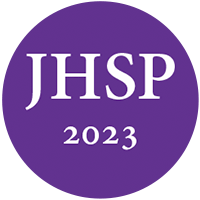Join a community of 10,000 credentialed HSPs.
Learn it today. Apply it tomorrow.
Connecting you to what you need for your career.
Schmidt, C. J., & Henry, J. A. (2018). Behavioral intervention in tinnitus management. Journal of Health Service Psychology, 44, 15–18.
Tinnitus is the presence of ringing or buzzing in the ears or head. Between 10% and 15% of Americans have some degree of tinnitus. There is no cure for tinnitus, which is a symptom of other problems, not a disease itself. Progressive tinnitus management, an intervention developed over the last 22 years, is described. CBT for tinnitus is a component of the intervention program.
Beck, J. S. (2011). Cognitive behavior therapy : basics and beyond(2nd ed.). New York: Guilford Press.
Cima, R. F., Andersson, G., Schmidt, C. J., & Henry, J. A. (2014). Cognitive-behavioral treatments for tinnitus: a review of the literature. Journal of the American Academy of Audiology, 25(1), 29-61. doi: 10.3766/jaaa.25.1.4
dos Santos, G. M., Bento, R. F., de Medeiros, I. R., Oiticcica, J., da Silva, E. C., & Penteado, S. (2014). The influence of sound generator associated with conventional amplification for tinnitus control: randomized blind clinical trial. Trends in Hearing, 18. doi: 10.1177/2331216514542657
Edmonds, C.M., Ribbe, C., Thielman, E.J. & Henry, J.A. (2017). Progressive Tinnitus Management Level 3 Skills Education: A 5-Year Retrospective. American Journal of Audiology, 26, 242-250.
Folmer, R. L., Griest, S. E. & Martin, W. H. (2001). Chronic tinnitus as phantom auditory pain. Otolaryngology – Head & Neck Surgery, 124(4), 394-400.
Fuller, T. E., Haider, H. F., Kikidis, D., Lapira, A., Mazurek, B., Norena, A., . . . Cima, R. F. (2017). Different Teams, Same Conclusions? A Systematic Review of Existing Clinical Guidelines for the Assessment and Treatment of Tinnitus in Adults. Frontiers in Psychology, 8, 206. doi: 10.3389/fpsyg.2017.00206
Heapy, A. A., Wandner, L., Driscoll, M. A., LaChappelle, K., Czlapinski, R., Fenton, B. T., . . . Kerns, R. D. (2017). Developing a typology of patient-generated behavioral goals for cognitive behavioral therapy for chronic pain (CBT-CP): classification and predicting outcomes. Journal of Behavioral Medicine. doi: 10.1007/s10865-017-9885-4
Henry, J. A., Frederick, M., Sell, S., Griest, S., & Abrams, H. (2015). Validation of a novel combination hearing aid and tinnitus therapy device. Ear and Hearing, 36(1), 42-52. doi: 10.1097/AUD.0000000000000093
Henry, J. A., Griest, S., Thielman, E., McMillan, G., Kaelin, C., & Carlson, K. F. (2016). Tinnitus Functional Index: Development validation, outcomes research, and clinical application. Hearing Research, 334(April), 58-64. doi: 10.1016/jheares.2015.06.004
Henry, J. A., McMillan, G., Dann, S., Bennett, K., Griest, S., Theodoroff, S., . . . Saunders, G. (2017). Tinnitus Management: Randomized Controlled Trial Comparing Extended-Wear Hearing Aids, Conventional Hearing Aids, and Combination Instruments. Journal of the American Academy of Audiology, 28(6), 546-561. doi: 10.3766/jaaa.16067
Henry, J. A., Roberts, L. E., Caspary, D. M., Theodoroff, S. M., & Salvi, R. J. (2014). Underlying mechanisms of tinnitus: review and clinical implications. Journal of the American Academy of Audiology, 25(1), 5-22; quiz 126. doi: 10.3766/jaaa.25.1.2
Henry, J. A., Thielman, E. J., Zaugg, T. L., Kaelin, C., McMillan, G., Schmidt, C. J., Myers, P. J., & Carlson, K. (2017a). Telephone-based Progressive Tinnitus Management for persons with and without traumatic brain injury: A randomized controlled trial. Manuscript submitted for publication.
Henry, J. A., Thielman, E. J., Zaugg, T. L., Kaelin, C., Schmidt, C. J., Griest, S., . . . Carlson, K. (2017b). Randomized Controlled Trial in Clinical Settings to Evaluate Effectiveness of Coping Skills Education Used With Progressive Tinnitus Management. Journal of Speech, Language, and Hearing Research, 60(5), 1378-1397. doi: 10.1044/2016_JSLHR-H-16-0126
Henry, J. A., Zaugg, T. L., Myers, P. J., Schmidt, C. J., Griest, S., Legro, M. W., . . . Carlson, K. F. (2012). Pilot study to develop telehealth tinnitus management for persons with and without traumatic brain injury. Journal of Rehabilitation Research and Development, 49(7), 1025-1042.
Henry, J. A., Zaugg, T. L., Myers, P. J. & Kendall, C. J. (2010). How to Manage Your Tinnitus: A Step-by-Step Workbook, Third Edition. Plural Publishing, San Diego, CA.
Henry, J. A., Zaugg, T. L., Myers, P. J. & Kendall, C. J. (2010). Progressive Tinnitus Management: Clinical Handbook for Audiologists. Plural Publishing, San Diego, CA.
Henry, J. A., Zaugg, T. L., Myers, P. J. & Kendall, C. J. (2010). Progressive Tinnitus Management: Counseling Guide. Plural Publishing, San Diego, CA.
Hesser, H., Bankestad, E., & Andersson, G. (2015). Acceptance of Tinnitus As an Independent Correlate of Tinnitus Severity. Ear and Hearing, 36(4), e176-182. doi: 10.1097/AUD.0000000000000148
Hesser, H., Westin, V. Z., & Andersson, G. (2014). Acceptance as a mediator in internet-delivered acceptance and commitment therapy and cognitive behavior therapy for tinnitus. Journal of Behavioral Medicine, 37(4), 756-767. doi: 10.1007/s10865-013-9525-6
Hoffman, H. J., & Reed, G. W. (2004). Epidemiology of tinnitus. In J. B. Snow (Ed.), Tinnitus: Theory and Management (pp. 16-42). Hamilton, Canada: BC Becker.
Lew, H. L., Jerger, J. F., Guillory, S. B., & Henry, J. A. (2007). Auditory dysfunction in traumatic brain injury. Journal of Rehabilitation, Research and Development, 44(7), 921-928.
Martinez-Devesa, P., Perera, R., Theodoulou, M., & Waddell, A. (2010). Cognitive behavioural therapy for tinnitus. Cochrane Database of Systematic Reviews (9), CD005233. doi: 10.1002/14651858.CD005233.pub3
Martz, E., & Henry, J. A. (2016). Coping with tinnitus. Journal of Rehabilitation, Research and Development, 53(6), 729-742. doi: 10.1682/JRRD.2015.09.0176
Mazurek, B., Szczepek, A. J., & Hebert, S. (2015). Stress and tinnitus. HNO, 63(4), 258-265. doi: 10.1007/s00106-014-2973-7
McCormack, A., Edmondson-Jones, M., Somerset, S., & Hall, D. (2016). A systematic review of the reporting of tinnitus prevalence and severity. Hearing Research, 337, 70-79. doi: 10.1016/j.heares.2016.05.009
Myers, P. J., Griest, S., Kaelin, C., Legro, M. W., Schmidt, C. J., Zaugg, T. L., & Henry, J. A. (2014). Development of a progressive audiologic tinnitus management program for Veterans with tinnitus. Journal of Rehabilitation, Research and Development, 51(4), 609-622. doi: 10.1682/JRRD.2013.08.0189
Newman, C. W., Jacobson, G. P., & Spitzer, J. B. (1996). Development of the Tinnitus Handicap Inventory. Archives of Otolaryngology – Head & Neck Surgery. 122(2), 143-148.
Nondahl, D. M., Cruickshanks, K. J., Wiley, T. L., Klein, B. E., Klein, R., Chappell, R., & Tweed, T. S. (2010). The ten-year incidence of tinnitus among older adults. International Journal of Audiology, 49(8), 580-585. doi: 10.3109/14992021003753508
Robinson, S. (2007). Antidepressants for treatment of tinnitus. Progress in Brain Research, 166, 263-271. doi: 10.1016/S0079-6123(07)66024-5
Shargorodsky, J., Curhan, G. C., & Farwell, W. R. (2010). Prevalence and characteristics of tinnitus among US adults. American Journal of Medicine, 123(8), 711-718. doi: 10.1016/j.amjmed.2010.02.015
Tunkel, D. E., Bauer, C. A., Sun, G. H., Rosenfeld, R. M., Chandrasekhar, S. S., Cunningham, E. R., Jr., . . . Whamond, E. J. (2014). Clinical practice guideline: tinnitus. Otolaryngology- Head and Neck Surgery, 151(2 Suppl), S1-S40. doi: 10.1177/0194599814545325
US Department of Veterans Affairs. (2017). Veterans Benefits Administration reports: Annual benefits report Fiscal Year 2016. Washington, DC: Author. Retrieved from: https://www.benefits.va.gov/REPORTS/abr/ABR-All_Sections_FY16_06292017.pdf
Yankaskas, K. (2013). Prelude: noise-induced tinnitus and hearing loss in the military. Hearing Research, 295, 3-8. doi: 10.1016/j.heares.2012.04.01
Copyright © 2024 All rights reserved. National Register of Health Service Psychologists










